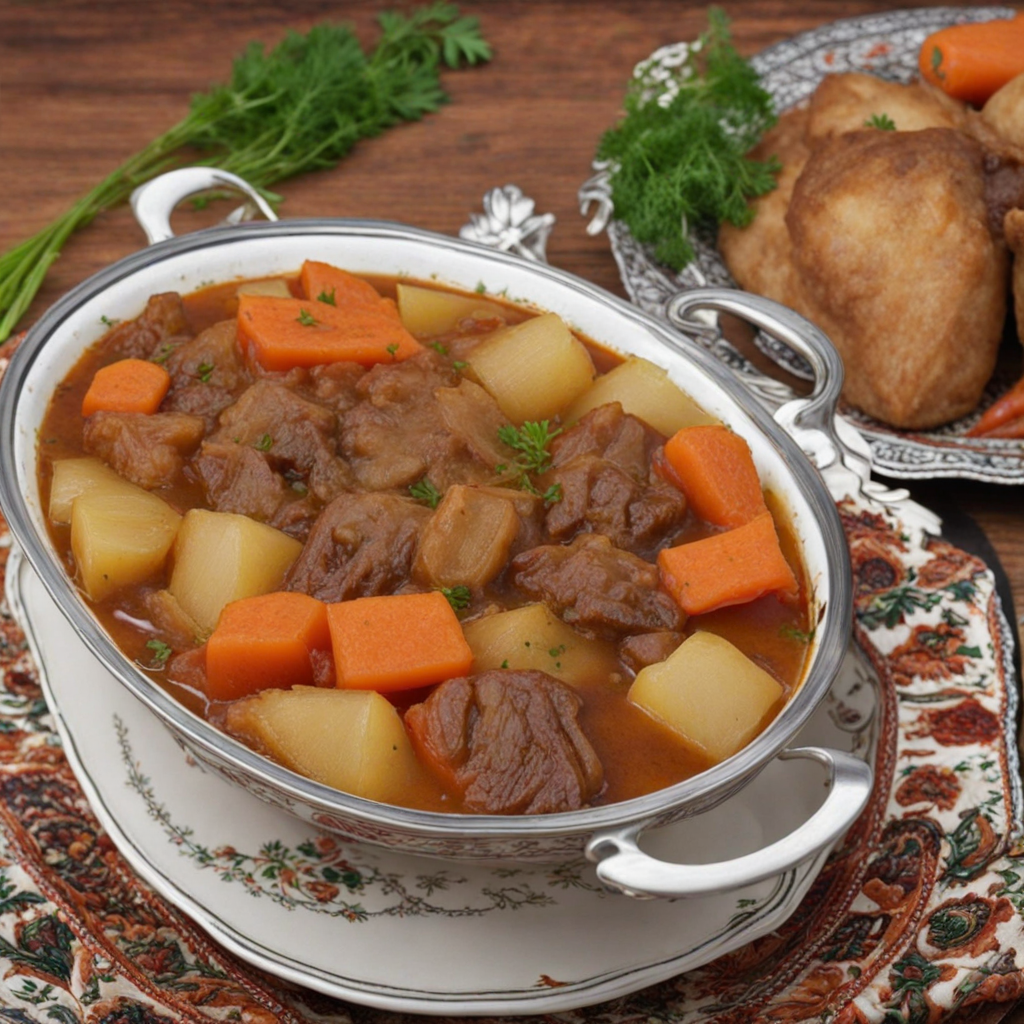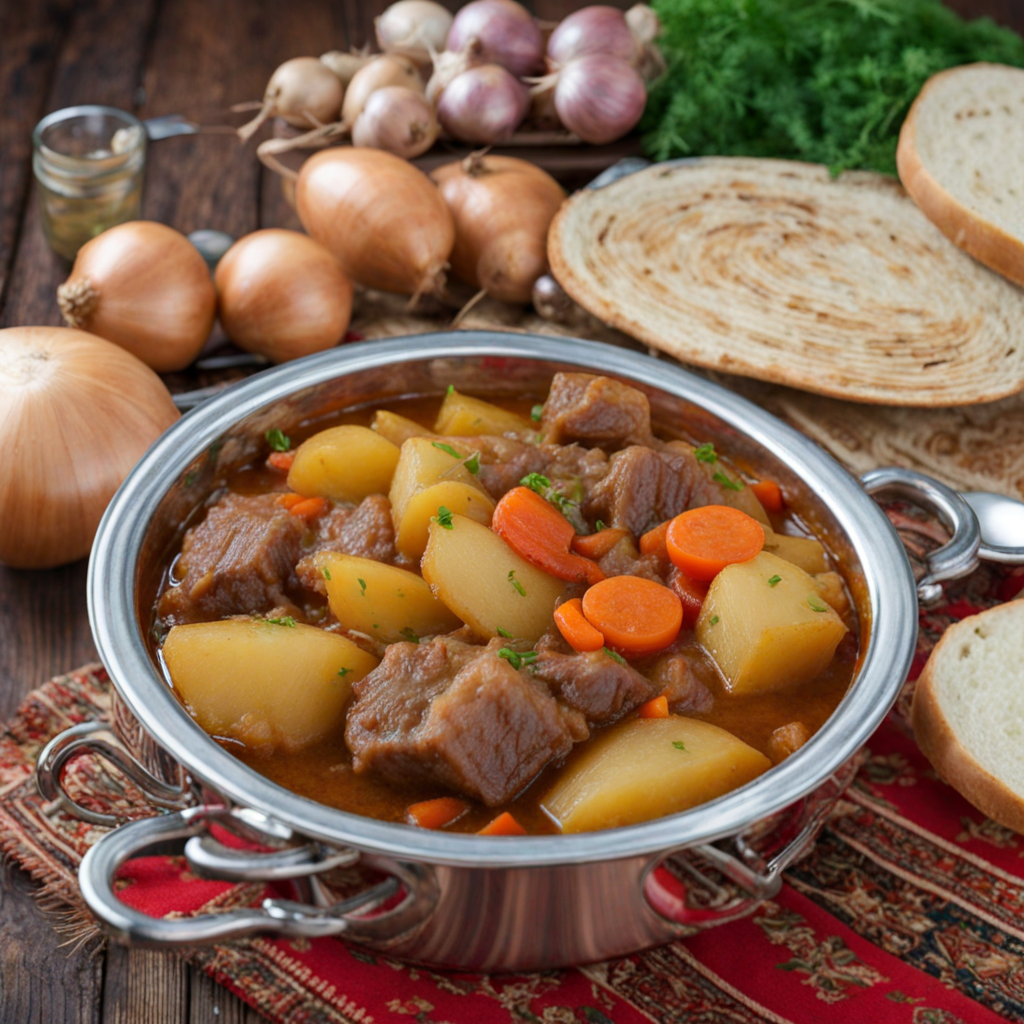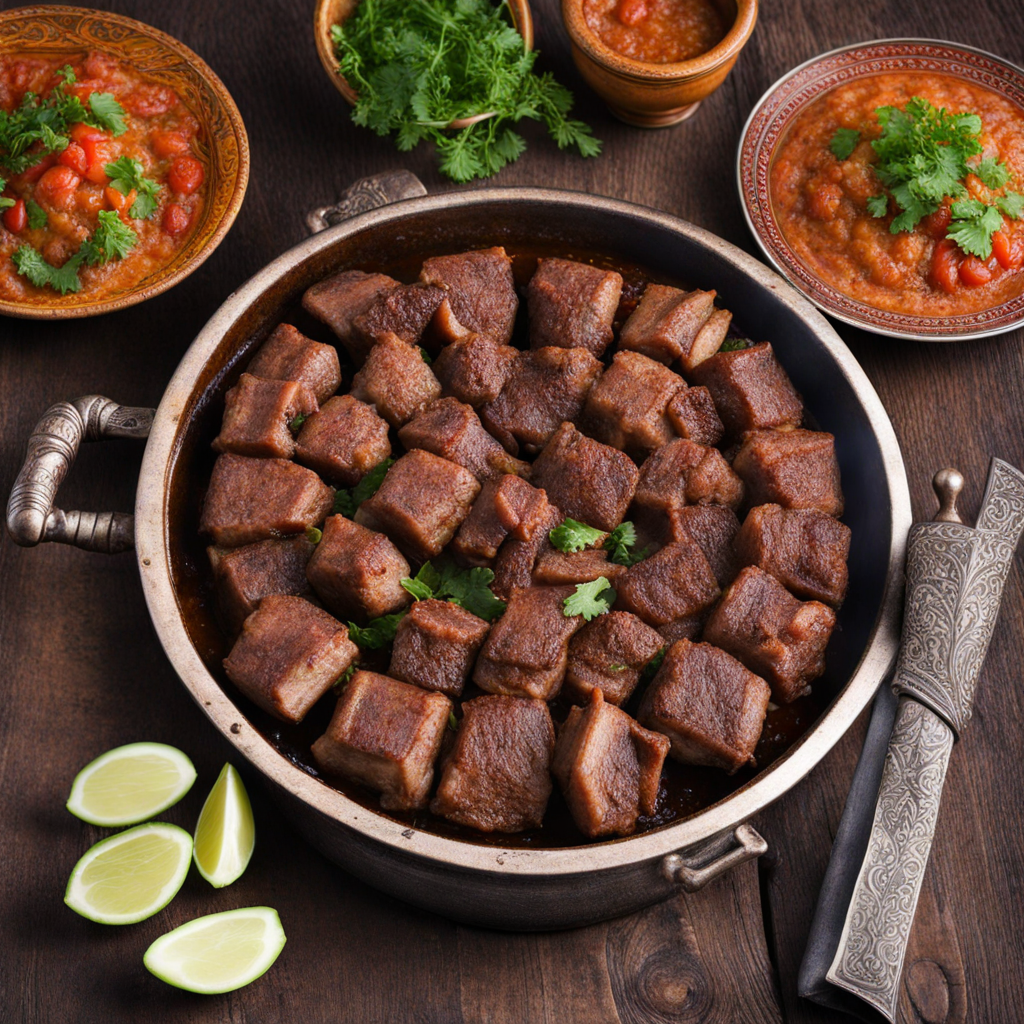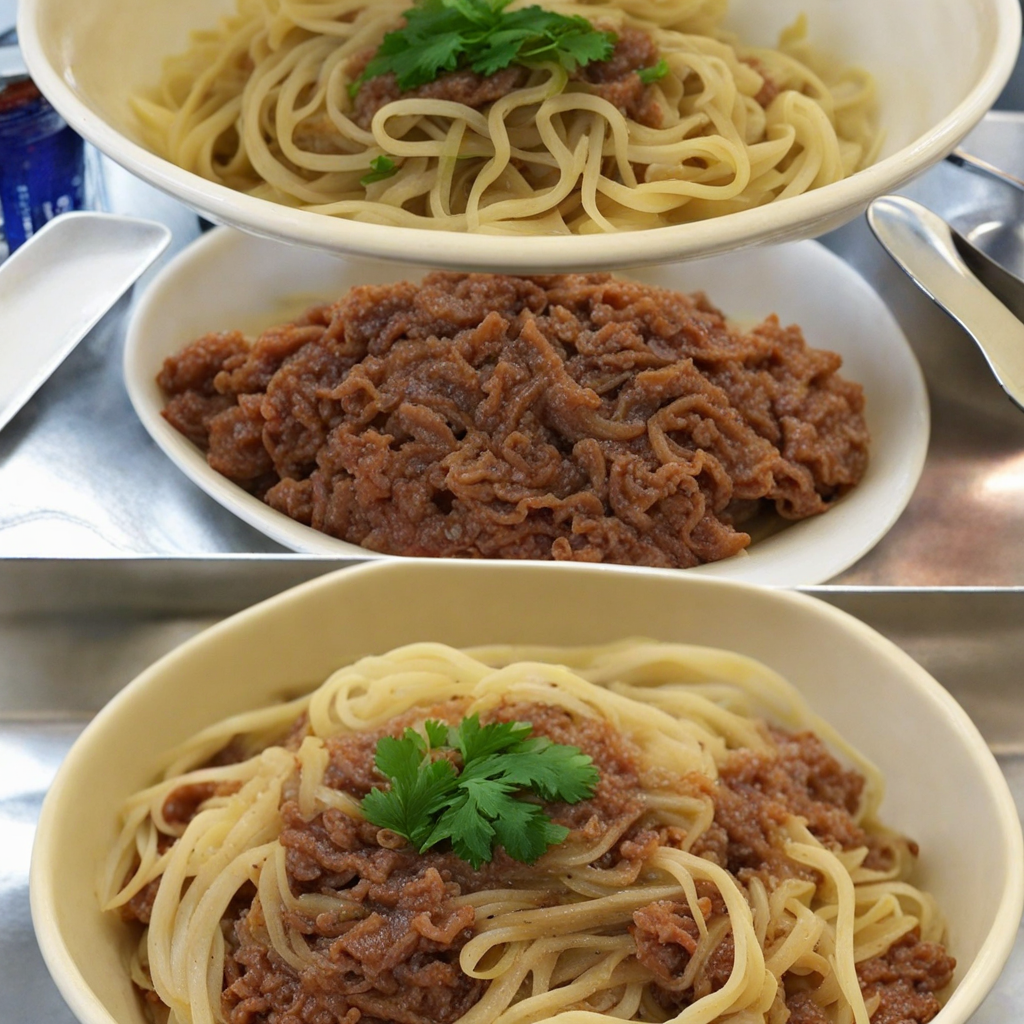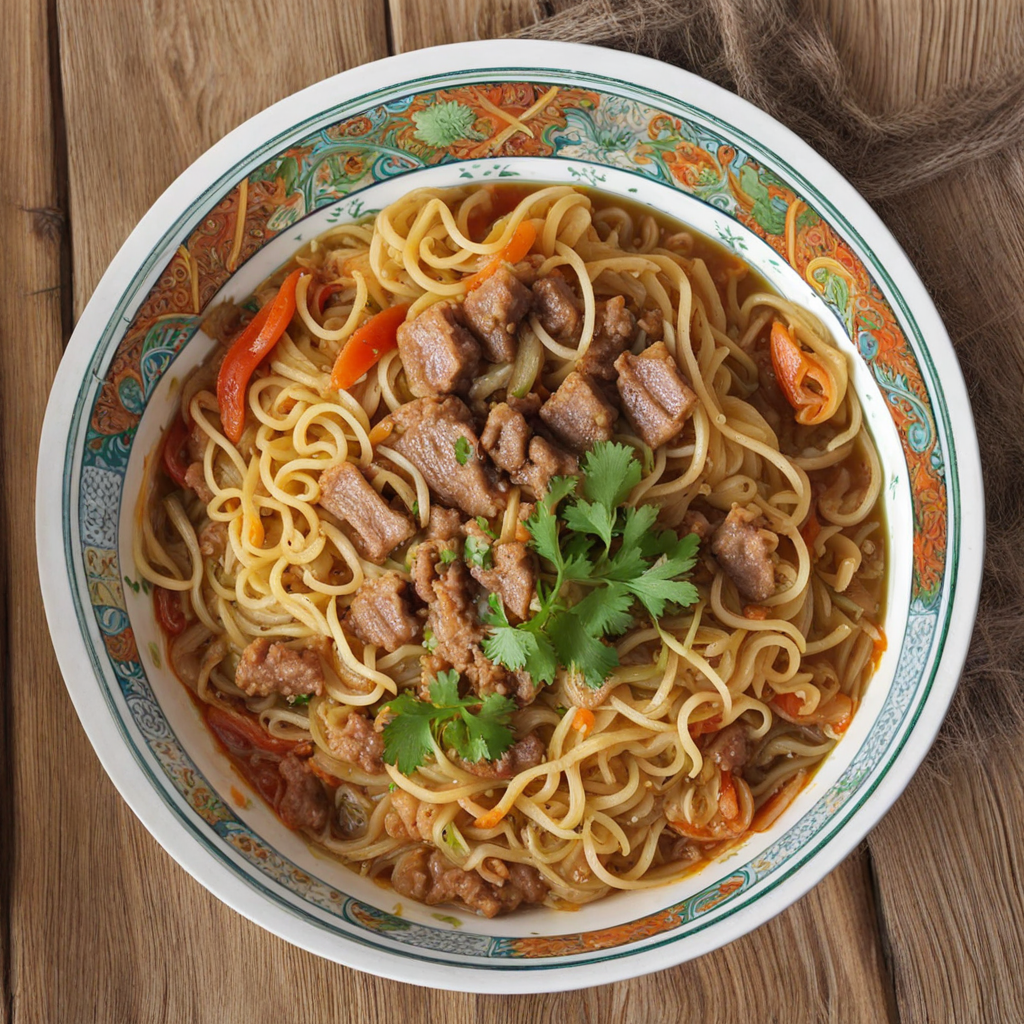Dimlama
Dimlama is a traditional Uzbek dish that embodies the essence of hearty, rustic flavors and the rich culinary heritage of Central Asia. This slow-cooked stew typically features an array of ingredients, including tender meats such as lamb or beef, complemented by a colorful medley of vegetables like potatoes, carrots, onions, and bell peppers. The dish is seasoned with aromatic herbs and spices, including cumin and coriander, which enhance its flavor profile and create a warm, inviting aroma that tantalizes the senses. Dimlama is not just a dish; it's a celebration of communal dining often enjoyed with family and friends, reflecting the hospitality that Uzbekistan is known for. The cooking method of Dimlama is what truly sets it apart. Traditionally prepared in a heavy pot or a clay dish, the ingredients are layered and cooked slowly over low heat. This technique allows the flavors to meld beautifully, resulting in a rich, savory broth that seeps into the vegetables and meat, making every bite a burst of taste. The dish often incorporates seasonal vegetables, showcasing the abundance of fresh produce available in Uzbekistan, which adds a delightful variety to the texture and taste. As it simmers, Dimlama develops a comforting consistency that is perfect for dipping bread or serving alongside rice. When served, Dimlama is a feast for the eyes as much as it is for the palate. The vibrant colors of the vegetables alongside the succulent pieces of meat create a visually appealing dish that invites you to dig in. Each serving reflects a harmony of flavors, with the sweetness of the vegetables balancing the savory meat, while the spices add warmth and depth. This delightful combination makes Dimlama a must-try for anyone looking to explore the tastes of Uzbekistan, offering a unique and satisfying experience that warms both the heart and the soul.
How It Became This Dish
Димлама: A Culinary Journey Through Uzbekistan's Rich Heritage Origins of Димлама Димлама, a traditional dish from Uzbekistan, embodies the heart and soul of Central Asian cuisine. Its name derives from the Uzbek word "dimlash," which translates to "to stew" or "to cook slowly." This method of preparation reflects not only the practicality of cooking in the arid climate of the region but also the deep cultural roots that connect the people to their land and traditions. Historically, the origins of Димлама can be traced back to the nomadic lifestyles of the Turkic tribes that roamed the vast steppes of Central Asia. As these tribes settled in the fertile valleys of the region, they began to cultivate crops and domesticate animals. The abundance of fresh vegetables, grains, and meats laid the foundation for what would evolve into this beloved dish. The use of seasonal ingredients is a hallmark of Димлама, showcasing the rich agricultural diversity of Uzbekistan, which has been influenced by the Silk Road's trade routes, bringing spices, flavors, and culinary techniques from different cultures. Cultural Significance Димлама is more than just a dish; it is a symbol of hospitality, family unity, and cultural heritage. In Uzbekistan, food is often the centerpiece of social gatherings, celebrations, and rituals. Preparing Димлама typically involves a communal effort, where family members come together to chop vegetables, season the meat, and share stories. This collaborative spirit is reflective of the broader Uzbek culture, which values community and togetherness. The dish itself is often served during significant occasions, including weddings, holidays, and religious festivities, highlighting its role in cultural celebrations. Dishes like Димлама are not just sustenance; they represent a connection to ancestry and tradition, playing a crucial role in the social fabric of Uzbek life. Moreover, the preparation of Димлама is often passed down through generations, with each family adding its own unique twist to the recipe, thereby preserving individual heritage while contributing to the collective culinary narrative of Uzbekistan. Ingredients and Preparation Димлама is renowned for its simplicity and the quality of its ingredients. The dish typically includes tender cuts of meat, such as lamb or beef, layered with an array of fresh vegetables, including potatoes, carrots, onions, bell peppers, and tomatoes. Aromatic spices such as cumin, coriander, and black pepper enhance the natural flavors of the ingredients. The slow-cooking method allows the meat to become tender while the vegetables soften, resulting in a rich, flavorful stew. The preparation begins with browning the meat in a heavy pot, often made of clay or cast iron, which helps retain heat and moisture. Once the meat is seared, the chopped vegetables are added in layers, starting with those that take the longest to cook. Water or broth is then poured into the pot, and the dish is covered tightly to trap steam, allowing the ingredients to cook evenly. The result is a hearty and aromatic stew that is often served with flatbread or rice, embodying the essence of Uzbek comfort food. Evolution Over Time As Uzbekistan has evolved through the centuries, so too has the dish of Димлама. The fall of the Soviet Union in 1991 marked a significant turning point in the country’s history and its culinary landscape. With newfound independence, there was a resurgence in national identity, which included a revival of traditional foods like Димлама. Chefs and home cooks alike began to explore and rediscover age-old recipes, often infusing them with contemporary techniques and flavors, while still honoring the original essence of the dish. The globalization of cuisine has also played a role in the evolution of Димлама. As Uzbekistan opened up to the world, culinary exchanges began to influence local cooking styles. Travelers and expatriates introduced new ingredients and cooking methods, which have gradually been integrated into traditional recipes. This has led to the emergence of fusion dishes that still maintain the spirit of Димлама, showcasing the adaptability and resilience of Uzbek cuisine. Furthermore, the rise of culinary tourism has put Uzbek dishes, including Димлама, on the global stage. Food enthusiasts from around the world are drawn to Uzbekistan’s vibrant markets, where they can experience the freshness of local ingredients and the warmth of Uzbek hospitality. This interest has prompted chefs to innovate while staying true to their roots, leading to a renaissance of traditional dishes that appeal to a modern palate. Contemporary Significance Today, Димлама continues to hold a cherished place in the hearts of Uzbeks and food lovers alike. It is often featured in restaurants that celebrate traditional Uzbek cuisine, where chefs take pride in crafting authentic versions of the dish. Additionally, social media platforms have allowed home cooks to showcase their versions of Димлама, creating a virtual community that shares recipes, techniques, and stories associated with the dish. Moreover, the preparation of Димлама has become a cultural experience for tourists, who often participate in cooking classes that focus on traditional Uzbek cuisine. These experiences not only educate visitors about the ingredients and methods but also foster a deeper understanding of the cultural significance of food in Uzbekistan. Conclusion Димлама is more than just a dish; it is a story woven into the fabric of Uzbek culture, reflecting the country’s history, values, and sense of community. Its evolution over time speaks to the resilience of culinary traditions in the face of change, while its enduring popularity showcases the universal appeal of hearty, wholesome food. As Uzbekistan continues to navigate its place in the modern world, Димлама remains a comforting reminder of the past, a testament to the power of food in bringing people together, and a vibrant emblem of a rich cultural heritage that is celebrated both locally and globally.
You may like
Discover local flavors from Uzbekistan


